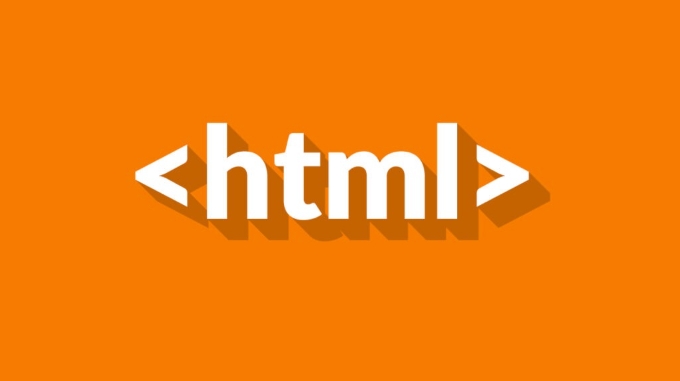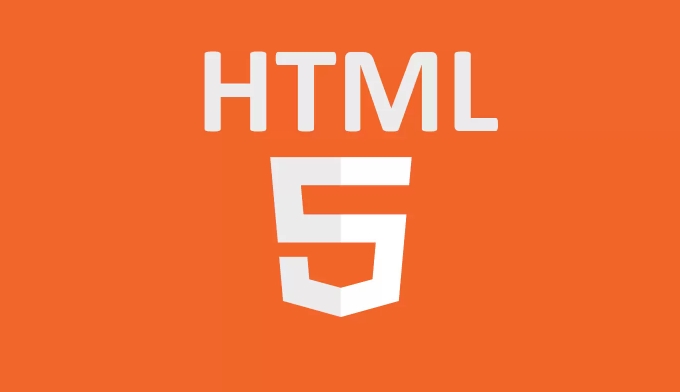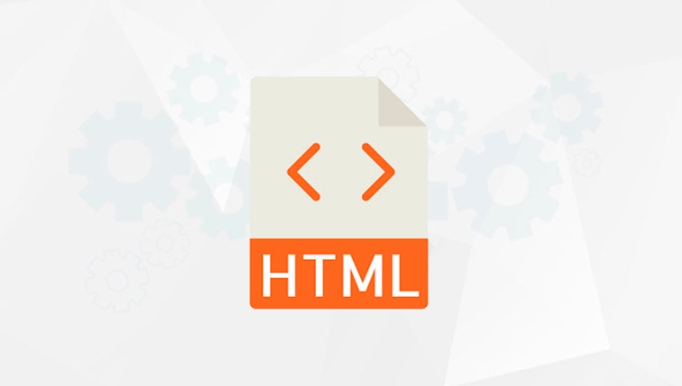When making a chat application interface, using HTML to build structure is a basic and critical step, which directly affects subsequent styles and interactions. First of all, the chat interface is generally divided into three parts: the top title bar, the message display area, and the input area. It is recommended to use a div to wrap the entire container and subdivate the area, which has a clear structure and is easy to expand. Secondly, each message is recommended to be wrapped with a div or li, including the sender, content, and time, and add incoming or outgoing classes according to the message type for style distinction. Third, the input area should include an input box and a send button, which supports carriage return sending and empty message judgment, and reserve space for automatically expanding the height. In addition, you need to pay attention to the message order, avoid too deep structure nesting, and use semantic tags reasonably to ensure that the HTML structure is concise, orderly and easy to maintain.

When making a chat application interface, using HTML to build structure is the most basic step. Many people think HTML is simple at first, but to really create a clear, easy-to-use and highly extensible chat interface, there are actually many details that need to be paid attention to. In particular, the organization of structure, the arrangement of messages, and the layout of input boxes, all directly affect the subsequent style and interaction.

The basic structure of the chat window
A typical chat interface generally includes three parts: the top title bar, message display area, and input area. In HTML structure, you can wrap the entire chat container with div and then subdiv the area inside.
<div class="chat-container">
<div class="chat-header">Chat window</div>
<div class="chat-messages">
<!-- The message content will be placed here->
</div>
<div class="chat-input">
<input type="text" placeholder="Input message..." />
<button>Send</button>
</div>
</div> This structure is clear and clear, making it easier to add functions using CSS layout and JS later. For example, chat-messages area can dynamically add messages, and input and button can bind to send events.

HTML structure of message items
Each message usually includes information such as sender, content, time, etc. Structurally, it is recommended to wrap each message item with div or li , which makes it easier to manage and style control in a unified manner.
<div class="message"> <div class="message-sender">User A</div> <div class="message-content">Hello, how are you doing today? </div> <div class="message-time">10:00 AM</div> </div>
- If it is a message sent by the other party, you can add an
incomingclass - Add
outgoingclass to the message you send - In this way, the left and right alignment, background color, etc. can be set in CSS respectively
A common practice is to dynamically generate different class names according to the message type, so as to facilitate style distinction.

Structure and interaction of input areas
The input area generally includes an input box and a "send" button. Sometimes a "Upload File" button or emoticon icon is added.
<div class="chat-input"> <input type="text" id="message-input" placeholder="Input message..." /> <button id="send-button">Send</button> </div>
- The input box should support carriage return sending, and you can use JS to listen for
keydownevents. - The button click must also be bound to the sending logic
- When the input content is empty, you can add a judgment to avoid sending empty messages.
In addition, the input box height can be set to automatically expand to improve the user experience. Although this function requires the cooperation of JS or CSS, it is best to reserve space and id in the HTML structure to facilitate subsequent processing.
Frequently Asked Questions and Notes
- Message order : New messages should be placed at the bottom. You can use JS to set
scrollTopto automatically scroll to the bottom. - Empty message processing : Do not send when the input box is empty to avoid blank messages on the interface
- Don't nest too deeply : too many levels will affect performance and will not be convenient for maintenance.
- Use of semantic tags : Although
divare easy to use, appropriate use ofsection,articleand other tags can make the structure clearer
HTML is the basis of the chat interface. If the structure is well matched, the subsequent styles and interactions will be smoother. In fact, it is not complicated, but some details are easy to ignore, such as the layout structure of the message and the interactive processing of the input box, which will affect the overall experience. Basically that's it. Only by combining CSS and JS can you really run a chat application.
The above is the detailed content of HTML for Chat Application Interfaces. For more information, please follow other related articles on the PHP Chinese website!

Hot AI Tools

Undress AI Tool
Undress images for free

Undresser.AI Undress
AI-powered app for creating realistic nude photos

AI Clothes Remover
Online AI tool for removing clothes from photos.

Clothoff.io
AI clothes remover

Video Face Swap
Swap faces in any video effortlessly with our completely free AI face swap tool!

Hot Article

Hot Tools

Notepad++7.3.1
Easy-to-use and free code editor

SublimeText3 Chinese version
Chinese version, very easy to use

Zend Studio 13.0.1
Powerful PHP integrated development environment

Dreamweaver CS6
Visual web development tools

SublimeText3 Mac version
God-level code editing software (SublimeText3)

Hot Topics
 Applying Semantic Structure with article, section, and aside in HTML
Jul 05, 2025 am 02:03 AM
Applying Semantic Structure with article, section, and aside in HTML
Jul 05, 2025 am 02:03 AM
The rational use of semantic tags in HTML can improve page structure clarity, accessibility and SEO effects. 1. Used for independent content blocks, such as blog posts or comments, it must be self-contained; 2. Used for classification related content, usually including titles, and is suitable for different modules of the page; 3. Used for auxiliary information related to the main content but not core, such as sidebar recommendations or author profiles. In actual development, labels should be combined and other, avoid excessive nesting, keep the structure simple, and verify the rationality of the structure through developer tools.
 What are the essential HTML elements for structuring a webpage?
Jul 03, 2025 am 02:34 AM
What are the essential HTML elements for structuring a webpage?
Jul 03, 2025 am 02:34 AM
The web page structure needs to be supported by core HTML elements. 1. The overall structure of the page is composed of , , which is the root element, which stores meta information and displays the content; 2. The content organization relies on title (-), paragraph () and block tags (such as ,) to improve organizational structure and SEO; 3. Navigation is implemented through and implemented, commonly used organizations are linked and supplemented with aria-current attribute to enhance accessibility; 4. Form interaction involves , , and , to ensure the complete user input and submission functions. Proper use of these elements can improve page clarity, maintenance and search engine optimization.
 Implementing client-side form validation using HTML attributes.
Jul 03, 2025 am 02:31 AM
Implementing client-side form validation using HTML attributes.
Jul 03, 2025 am 02:31 AM
Client-sideformvalidationcanbedonewithoutJavaScriptbyusingHTMLattributes.1)Userequiredtoenforcemandatoryfields.2)ValidateemailsandURLswithtypeattributeslikeemailorurl,orusepatternwithregexforcustomformats.3)Limitvaluesusingmin,max,minlength,andmaxlen
 What are self-closing tags in HTML?
Jul 02, 2025 pm 02:55 PM
What are self-closing tags in HTML?
Jul 02, 2025 pm 02:55 PM
Self-closing tags are elements in HTML that do not require closed tags because they do not contain content. Common examples include: ① Insert pictures; ② Add line breaks; ③ Create horizontal lines; ④ Define form input; ⑤ Link external resources; ⑥ Provide metadata. These tags work through attributes such as or. There are two correct ways to write: standard HTML syntax, such as XHTML style, but HTML5 recommends the former. Note that you cannot use self-closed form on labels that require the package content. If the error is wrong, it should be changed to a correctly closed Hello. Proper use of self-closing tags helps keep your code simple and efficient, and improves compatibility with other tools such as frameworks.
 Implementing Clickable Buttons Using the HTML button Element
Jul 07, 2025 am 02:31 AM
Implementing Clickable Buttons Using the HTML button Element
Jul 07, 2025 am 02:31 AM
To use HTML button elements to achieve clickable buttons, you must first master its basic usage and common precautions. 1. Create buttons with tags and define behaviors through type attributes (such as button, submit, reset), which is submitted by default; 2. Add interactive functions through JavaScript, which can be written inline or bind event listeners through ID to improve maintenance; 3. Use CSS to customize styles, including background color, border, rounded corners and hover/active status effects to enhance user experience; 4. Pay attention to common problems: make sure that the disabled attribute is not enabled, JS events are correctly bound, layout occlusion, and use the help of developer tools to troubleshoot exceptions. Master this
 How to group options within a select dropdown using html?
Jul 04, 2025 am 03:16 AM
How to group options within a select dropdown using html?
Jul 04, 2025 am 03:16 AM
Use tags in HTML to group options in the drop-down menu. The specific method is to wrap a group of elements and define the group name through the label attribute, such as: 1. Contains options such as apples, bananas, oranges, etc.; 2. Contains options such as carrots, broccoli, etc.; 3. Each is an independent group, and the options within the group are automatically indented. Notes include: ① No nesting is supported; ② The entire group can be disabled through the disabled attribute; ③ The style is restricted and needs to be beautified in combination with CSS or third-party libraries; plug-ins such as Select2 can be used to enhance functions.
 Configuring Document Metadata Within the HTML head Element
Jul 09, 2025 am 02:30 AM
Configuring Document Metadata Within the HTML head Element
Jul 09, 2025 am 02:30 AM
Metadata in HTMLhead is crucial for SEO, social sharing, and browser behavior. 1. Set the page title and description, use and keep it concise and unique; 2. Add OpenGraph and Twitter card information to optimize social sharing effects, pay attention to the image size and use debugging tools to test; 3. Define the character set and viewport settings to ensure multi-language support is adapted to the mobile terminal; 4. Optional tags such as author copyright, robots control and canonical prevent duplicate content should also be configured reasonably.
 Adding captions and tracks to HTML video and audio elements.
Jul 02, 2025 pm 04:05 PM
Adding captions and tracks to HTML video and audio elements.
Jul 02, 2025 pm 04:05 PM
To embed video or audio with subtitles and audio tracks into a web page, it can be achieved through HTML native functionality. 1. Use tags to add subtitles files in WebVTT format and set the kind, srclang and label attributes; 2. Support multi-language subtitles through multiple elements, and use the default attribute to set the default language; 3. Multi-tracks can control multiple element switching through JavaScript, or use more complex media extension solutions; 4. Pay attention to browser compatibility, path configuration and format verification to ensure normal operation on different devices and provide backup solutions.






